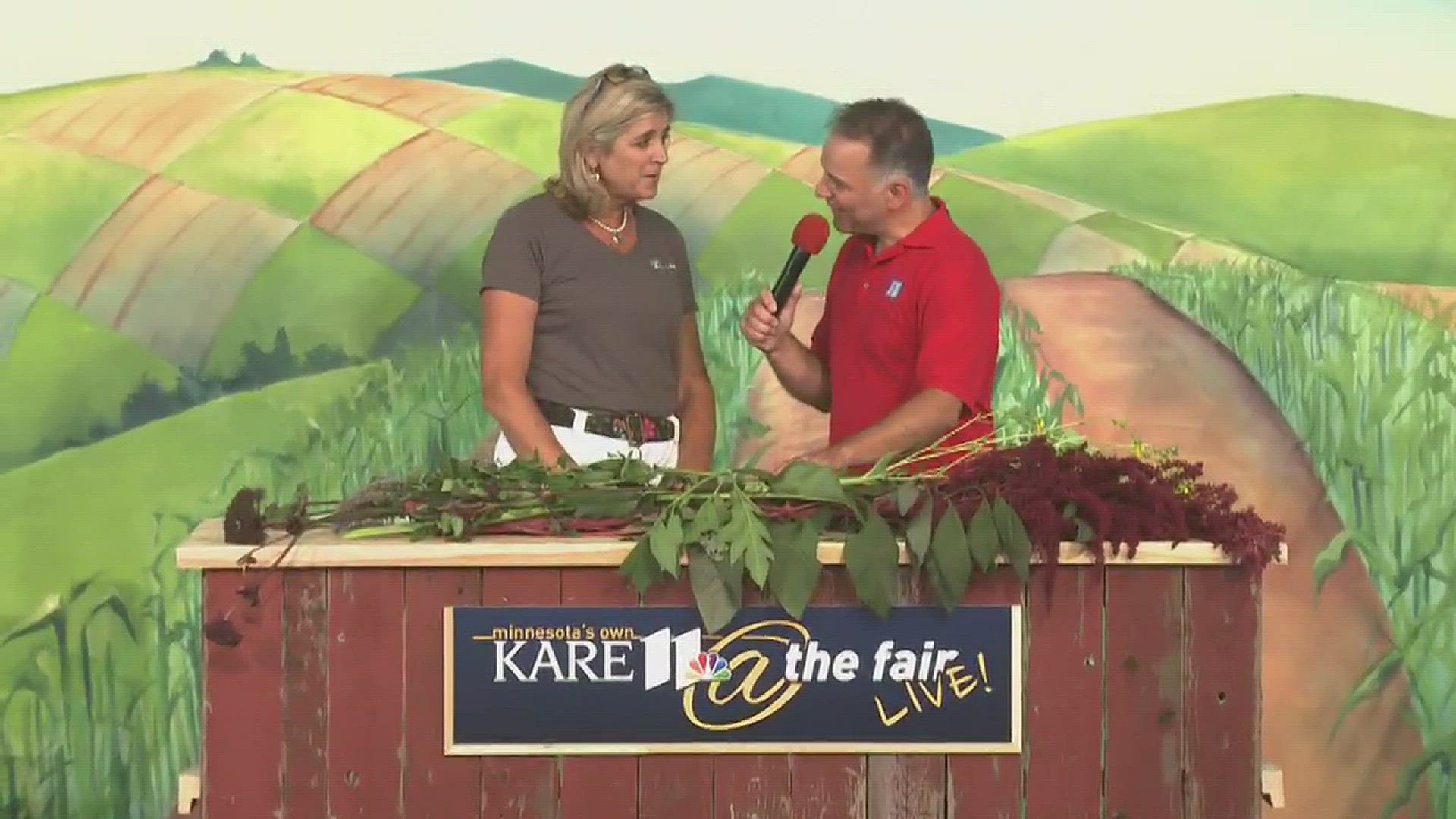GOLDEN VALLEY, Minn. - Heidi Heiland from local landscape firm Heidi’s Lifestyle Gardens and their new GrowHaus appeared on KARE 11 News at 4 p.m. to describe perennial plants that have stacking functions.
These plants can have many benefits such as being native, pollinator friendly, medicinal, drought tolerant, hold several seasons of interest and bio accumulators.
Angelica gigas -- This is a biennial plant from Asia that inhabits forests, grasslands and banks of streams. It's highly attractive to bees. The roots are used in traditional Chinese medicine. It is considered an herb traditionally used in Korean medicine. The plants of the angelica family are used to improve gynecological health. Though Angelica gigas is often seen as a female supplement, it is also used to improve cardiovascular and immune system health for both men and women.The herb is also being investigated for its anti-cancer effects. It has promise for being used alongside chemotherapy, but more evidence is needed before it can be specifically recommended. Further research is being performed to confirm these effects.
Silphium – Cup Plant is common to the western states, and is found growing in rich bottom or interval lands. Cup plant because of the ability to drink from the leaves after a rain. The root is the medicinal part. It is chewed by Native Americans to sweeten the breath. It is said to be one of the best remedies for an enlarged spleen. It is also useful for ulcers and liver affections
Agastache - Anise Hyssop, is an upright, clump-forming perennial of the mint family that is native to parts of the upper Midwest and Great Plains It is typically found in prairies, dry upland forested areas, plains and fields. It grows to 2-4' tall. It is noted for its mid- to late summer bloom of lavender to purple flowers in terminal spikes and its anise-scented foliage. Square stems are clad with ovate to broad-lanceolate dull green leaves (to 4" long) with toothed margins. Flowers are attractive to bees (good nectar plant), hummingbirds and butterflies. Aromatic leaves can be used to make herbal teas or jellies. Seeds can be added to cookies or muffins. Dried leaves can be added to potpourris.
Comfrey -- Comfrey is a useful plant used for centuries to heal wounds and broken bones, hence its other name: knitbone. Leaves or roots applied as a wash, poultice or ointment are used for bruising, sciatica, boils, rheumatism, neuralgia, varicose veins, bed sores, wounds, ulcers, insect bites, tumours, muscular pain, pulled tendons, gangrene, shingles and dermatological conditions. Internally, comfrey leaf tea has been used to help with indigestion, stomach and bowel problems, excessive menstrual flow, hoarseness, periodontal diseases, bleeding gums, thyroid disorders, diarrhea, gastrointestinal ulcers, hernia, glandular fever, coughs, lung conditions, hemorrhaging, cancer, catarrh, anemia, sinusitis, lupus, lowering blood pressure, hiatus hernia, blood purifier, to ease inflammation of the joints and mucus membranes.
Comfrey can also be used in the garden:
- Comfrey as a compost activator – include comfrey in the compost heap to add nitrogen and help to heat the heap. Comfrey should not be added in quantity as it will quickly break down into a dark sludgy liquid that needs to be balanced with more fibrous, carbon-rich material.
- Comfrey liquid fertilizer – can be produced by either rotting leaves down in rainwater for 4–5 weeks to produce a ready-to-use "comfrey tea", or by stacking dry leaves under a weight in a container with a hole in the base. When the leaves decompose a thick black comfrey concentrate is collected. This must be diluted at 15:1 before use.
- Comfrey as a mulch or side dressing – a two-inch layer of comfrey leaves placed around a crop will slowly break down and release plant nutrients; it is especially useful for crops that need extra potassium, such as fruit bearers but also reported to do well for potatoes. Comfrey can be slightly wilted before application optionally but either way, avoid using flowering stems as these can root.
- Comfrey as a companion plant for trees and other perennials – soil tests confirm[11] that soil nutrients increase in the presence of comfrey even when it is not used as mulch, side dressing, or liquid fertilizer, but just allowed to grow.
- Comfrey potting mixture – originally devised to utilize peat, now environmental awareness has led to a leaf mold-based alternative being adopted instead; two-year-old, well decayed leaf mold should be used, this will absorb the nutrient-rich liquid released by the decaying comfrey. In a black plastic sack alternate 7–10 cm (2.8–3.9 in) layers of leaf mold and chopped comfrey leaves. Add a little dolomitic limestone to slightly raise pH. Leave for between 2–5 months depending on the season, checking that it does not dry out or become too wet. The mixture is ready when the comfrey leaves have rotted and are no longer visible. Use as a general potting compost, although it is too strong for seedlings

